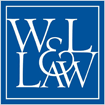Safe Harbors in the Shadows: Extending 10b5-1 Plans to Cover Shadow Trading
Abstract
Insider trading, or trading while in possession of material nonpublic information, remains the legal conundrum it has been for over four decades. The governing rule prohibiting insider trading is Rule 10b-5, passed in 1943 by the Securities and Exchange Commission (SEC) in order to clarify Section 10(b) of the Securities Exchange Act. Notably, neither Rule 10b-5 and Section 10(b) mention the term “insider trading.” In fact, scholars and historians have opined that insider trading was not considered by Congress as one of the aims of Section 10(b) or Rule 10b-5. Without any statutory guidance regarding insider trading, the legal contours of the prohibition against trading while in possession of material nonpublic information have been shaped almost exclusively by the common law.
The SEC recently pushed a “new” theory of insider trading forward: shadow trading. In August of 2021, the SEC charged Matthew Panuwat with insider trading. Panuwat worked for Medivation, a mid-sized biopharmaceutical company. In the course of his employment, Panuwat learned that Pfizer was going to acquire the company. Upon learning that his company was to be acquired, Panuwat purchased stock options in Incyte Corporation, another mid-sized biopharmaceutical company. Panuwat most likely believed that Medivation’s acquisition would make Incyte’s stock more valuable because it would make Incyte a more valuable target for acquisition by a larger firm. After Medivation announced its acquisition, Incyte stock prices rose, netting Panuwat $107,066 in profits.
The SEC charged Panuwat with insider trading for his trades in Incyte, despite the fact that Panuwat was not an insider at Incyte, and he received no information from an insider at Incyte. In short, the SEC argued that Panuwat committed insider trading despite his having no tie to Incyte or its employees whatsoever. The SEC premised its charges upon the misappropriation theory, reasoning that Panuwat owed a duty to Medivation as the source of the information to refrain from trading. Shadow trading thus represents a new and confusing theory of liability in a field already rife with confusion and complicated precedents.
As the confusion around what constituted insider trading grew (and continues to grow), the SEC in 2000 passed Rule 10b5-1, which created a safe harbor through 10b5-1 plans. Rule 10b5-1 plans allow corporate insiders to trade in securities of their company on a predetermined schedule. Rule 10b5-1 provides an affirmative defense to insider trading liability on the theory that because the trades were prescheduled and predetermined, they do not abuse material nonpublic information. The SEC recently amended Rule 10b5-1 to impose several new requirements on Rule 10b5-1 plans, including: (1) a cooling off period; (2) a certification as to the absence of possession of no material nonpublic information; (3) limitations on overlapping and single trade plans; and (4) a requirement to act in good faith.
The logical overlap of these two recent SEC efforts – an update to the 10b5-1 plans and the pursuit of shadow traders – suggests that 10b5-1 plans should be broadened to include peer firms. That is, insiders in corporations should be disallowed from trading in their own firms, as well as any peer/shadow firms, in order to keep to the spirit of 10b5-1 plans.

